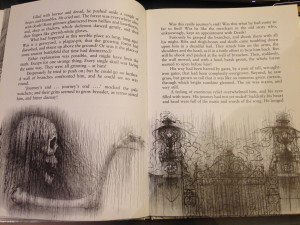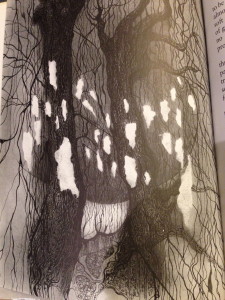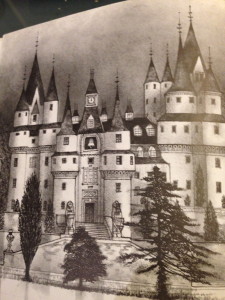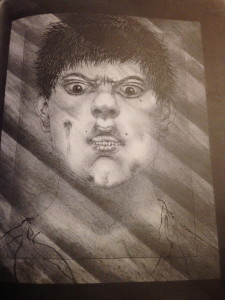In delay there lies no plenty;
Then come and kiss me, sweet-and-twenty,
Youth’s a stuff will not endure.
One of the things that keeps me interested in MAZE is the way it acts as a departure point for enjoyable free association. This can be a worthwhile result in itself, but Room 5 is an example of how this kind of thinking led me to what I think is a pretty satisfying solution via a convoluted path of mental connections.
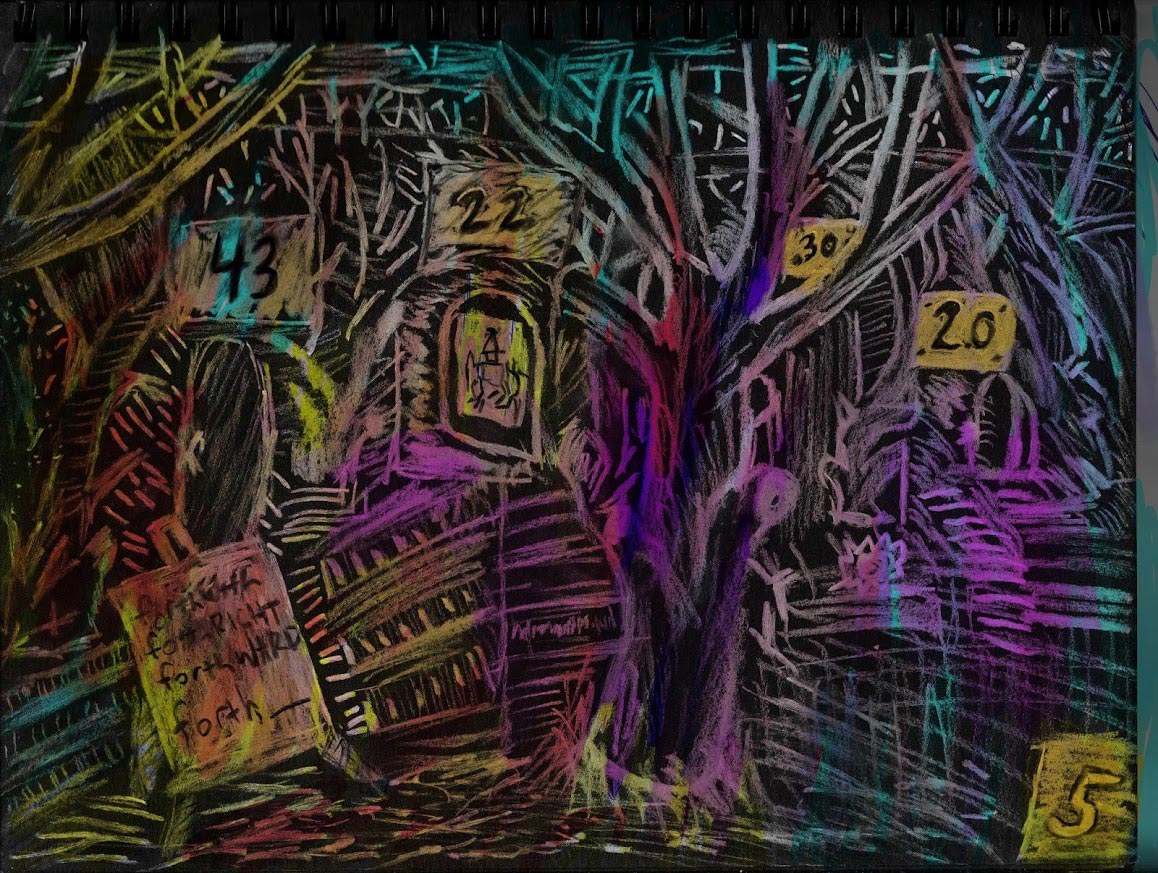
I was looking at Room 5 (rendered here in this lovely digitally-coloured chalk drawing by Crouchman) and thinking about the two best doors to take in that room, which are Room 20 and Room 30. Here is a recreation of what happened:
Twenty, thirty, twenty, thirty.
Twenty… twenty….
“Come and kiss me, sweet-and-twenty….”
Where did that thought come from? It’s a Shakespeare quote, isn’t it?
Google Google Google, oh right, Twelfth Night. Hmmmmmm…
(We now pause for many minutes of fruitless but fun analysis of plot and text of Twelfth Night, despite the only apparent connection between Room 5 and Twelfth Night being the mention/presence of the number twenty.)
OK, so it’s a song from a Shakespeare play.
But then why do I associate a pen-and-ink illustration of a young woman with that quote?
Wait, didn’t I once own a picture book that had the lyrics of the song as a theme throughout? I remember a man-a forest-a sleeping girl-oh right! It was a retelling of Sleeping Beauty.
Sleeping Beauty.
SLEEPING BEAUTY!
You can check out how the rest of it went on the Abyss. Quite a bit more Googling and checking of books and posting ensued. The short version is, the Grimm fairy tale we now know as Sleeping Beauty was called “Little Brier-Rose,” and a briar rose looks just like the one in Room 5, indicating the two safe doors. The solution doesn’t have anything to do with the number twenty or the “Come and kiss me…” song, but it was those linked thoughts that led me to the idea.
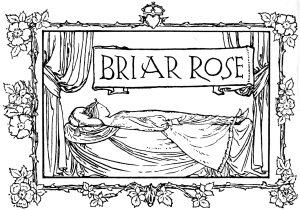
My fellow MazeCasters roll their eyes at the Sleeping Beauty solution, for the usual reasons (“Those aren’t brambles!” -vewatkin), but I think it’s solid, and it was one WR hadn’t thought of, making it extra-satisfying. (Although he did find the image of the briar rose once the idea was raised.) More importantly, I had a good time getting there, and I learned a lot about the Sleeping Beauty story that I didn’t know before. For example, it seems obvious now, but I hadn’t thought to read the pricked finger as the onset of puberty, or the hundred years and thicket as a metaphor for a way to allow the fifteen-year-old girl to grow up a little more before she starts entertaining errant princes. (Phillip Pullman describes this reading, Bruno Bettelheim’s, in an afterword to “Briar Rose” in his excellent collection of retellings, Fairy Tales from the Brothers Grimm.)
As an added bonus, I got to relive my childhood terror of Maleficent in dragon form. Brrrrrr!

After all this went down it was driving me crazy that I couldn’t remember the title, author, illustrator, or anything much else specific about that children’s book, other than that it quoted the Shakespeare song and was about Sleeping Beauty. My mom, ever the librarian even in retirement, found it among the many children’s books of ours that she had saved, going only by my vague description of the cover.
The book is The Wedding Ghost, written by Leon Garfield and illustrated by Charles Keeping. In an ASTONISHING COINCIDENCE, it was published in 1985, the same year as MAZE. It’s a strange work-a picture book that is not really a children’s book-sound familiar? It tells the story of a man, Jack, about to get married to Jill, his plain and solid sweetheart. He receives a mysterious map as a shower gift and ends up finding his way through a dense forest full of bones to the castle of a sleeping princess, a magnificent beauty who, once woken by Jack’s kiss, says nothing but “Oh!” Further odd events follow, and Jack somehow ends up married to both Jill and the Beauty.
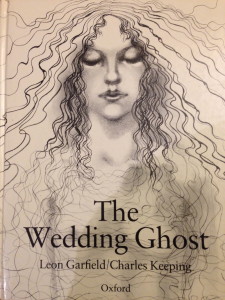
As a ten- or eleven-year-old I loved the creepy and slightly racy pictures, and these are as fantastic as I remember them. But what was really rewarding about reading the story again as a middle-aged person (how has THAT happened so suddenly?) was being able to appreciate and ponder some of the things it was saying about marriage and love and desire. I am grateful that MAZE and Room 5 helped me find it again.


